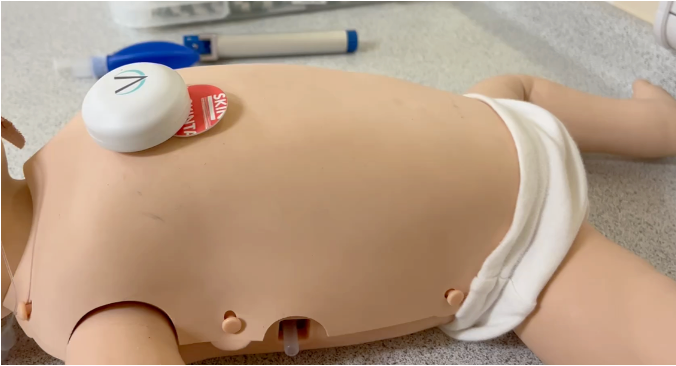EHI Awards 2011: Give it RealTime
- 17 January 2012

A key issue for any hospital is making sure that patients are discharged as soon as is safely possible. Likewise, most patients prefer not to stay any longer than necessary – and want to know in advance when they are due to be discharged.
Both NHS trusts and patients can now have their wish, thanks to an innovative patient flow and decision support system that improves admission and discharge planning.
Developed by RealTime Health in partnership with Cambridge University Hospitals NHS Foundation Trust, this cutting edge software focuses on helping hospital staff get inpatients clinically fit for discharge as early as possible.
And it does this by enabling every aspect of their hospital journey – from admission to discharge – to be managed collaboratively.
A new breed of system
“Clinical teams share responsibility for ensuring good care pathways and discharge planning, so keeping everyone on track is fundamental,” says Jim Gabriel, chief executive of RealTime Health.
“However, it’s difficult for trusts with thousands of staff across different disciplines to equip everyone with the necessary data to participate in the plan for every patient.
“The ‘rocket science’ behind RealTime is its ability to align multiple services and thereby ensure the earliest clinically safe discharge date for patients.
“It achieves this through OLAP [Online Analytical Processing]-driven, real-time dashboard technology delivered 24/7 over an intranet to provide clinicians with up-to-date, visual information about inpatients.”
A graphical dashboard shows ward layouts and patient information, including the number of days remaining to discharge.
It indicates where a patient is in terms of their care pathway, where they are physically in the hospital, and any factors that might affect when they are discharged, such as interaction with social services or instances of infection.
By having this data at their fingertips, staff can spot potential delays in advance and take action to remedy them. They can also update the system as things happen – for instance, when a bed space has been cleaned and is ready to be occupied, or when a patient is moved to a side room or different ward.
In this way, a 500-bed hospital, for example, can be managed as 500 potentially parallel discharge plans, with events affecting a particular plan immediately visible to all.
“Bed management systems typically involve a central process that looks at when beds are full – like a hotel booking system,” says Gabriel. “They tend to support those involved in operational management, but are of little benefit to others such as the chief executive, pharmacists, clinicians and porters.
“RealTime represents a new breed of system which answers performance related questions that lie below the surface and enables every member of staff to be involved in discharge and process improvement by giving them vital information at-a-glance.
“By providing a platform for transformational improvement in patient flow, the system makes it much easier for clinicians to embrace new ways of working.
Demonstrable benefits
After an initial pilot in its Medical Assessment Unit and one ward between August and October 2010, West Middlesex University Hospital NHS Trust became the first London trust to use RealTime. Now operational in all inpatient areas, the system is successfully managing patient flow around the hospital and removing inefficiencies.
RealTime has also been deployed in other NHS acute trusts, including Cambridge University Hospitals (RealTime’s beacon site and business partner), North Middlesex University Hospital, Scarborough and North East Yorkshire Healthcare, and North Cumbria University Hospitals.
As well as reducing the average length of patient stay, the system is enabling these trusts to realise significant benefits, including:
- The ability to manage throughput with fewer resources – and thereby to close escalation wards – means trusts can deliver care more efficiently and predictably in line with clinical best practice.
- Substantial savings through increased productivity and workload efficiency. Clinicians gain an instant view of what is happening throughout the hospital, promoting quicker response times to problems and allowing them to marry resources with needs.
- Reduced data entry since patient information is gleaned from existing hospital systems, such as the patient administration system. Plus reduced paperwork, since online checklists and assessment forms automate many processes.
- An easy to use system, combined with an extensive selection of key performance indicator reporting tools, helps improve data quality and provides immediate insights into the causes of delayed discharge.
- The ability to monitor beds more effectively and improve the patient experience whilst meeting Commissioning for Quality and Innovation (CQUIN) targets.
- Infection control, social services referrals and venous thromboembolism risk assessment tools mean fewer cases of healthcare-associated infection and improved patient safety; hence fewer delayed discharges and readmissions.
Rapid transformation
“We looked at several systems to help us improve the flow of patients through the hospital and chose RealTime because it’s simple to use and very powerful in what it offers,” says West Middlesex University Hospital’s applications project manager Maxine Peel, who worked closely with RealTime Health throughout the pilot implementation.
“The system helps our staff focus more clearly on planning discharges and ensures any obstacles or delays are avoided or minimised.
“Moreover, it prompts communication and interaction between multi-disciplinary teams to carry out interventions in a timely manner, enabling patients to be discharged on, or prior to, the date planned.
“It facilitates the constant focus needed in working towards the expected date of discharge, thereby enabling reductions in length of stay and improved bed capacity.”
Medical director Dr Stella Barnass says the system has had a huge impact. “We reduced length of stay so much that we were soon able to shut two wards and 70 beds – and did so while improving clinical care. With each closed ward saving an estimated £1m per annum in resources, we are rapidly transforming the way we work.
“Despite admissions levels rising by 15% nationally, we now enjoy a much lower average length of stay, improved discharges and 24/7 visibility of patient flow issues trust-wide, including full interaction with social services.
“By enforcing a collaborative and clinically driven model of working across our entire organisation, RealTime is a robust and repeatable discharge planning and decision support solution that’s good for our staff, good for patients, and good for the healthcare economy,” she concludes.
For further information:

The EHI Awards 2012 in association with BT will take place on 4 October. Details of this year’s categories and how to enter will be announced in March. If you would like to sponsor an award, please contact Neil Hadland.




